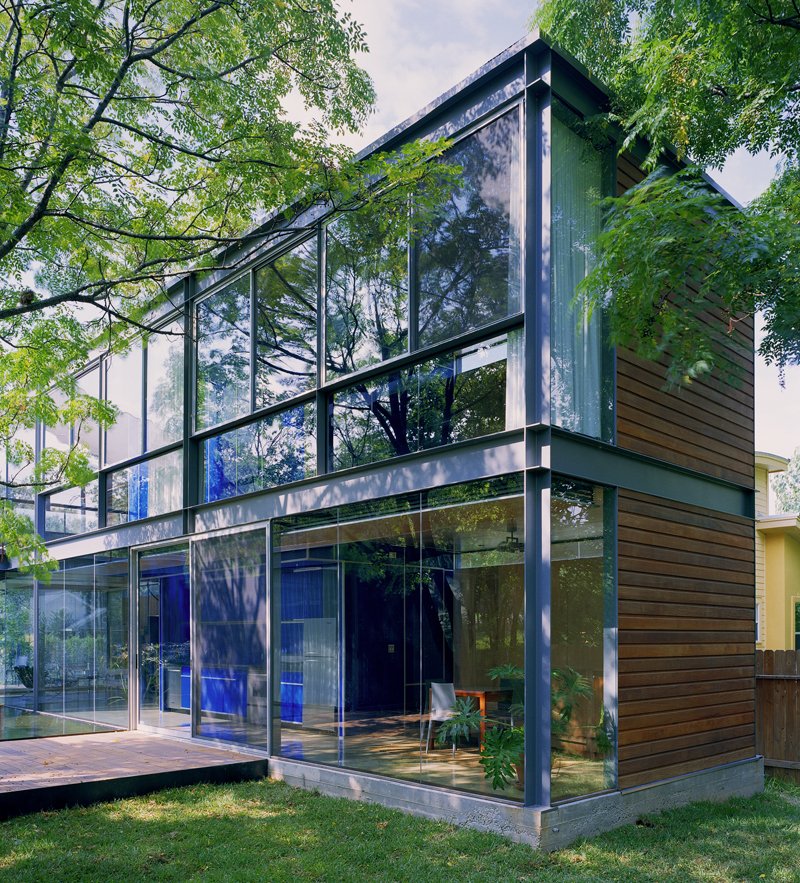#3964. Transparent Cube: Glass Facade with Wooden Accents Embraced by Nature
This modern house with a glass and wood facade represents a striking example of minimalist architecture where the boundary between interior and exterior space is virtually erased. The two-story structure is characterized by an abundance of glazing that occupies almost the entire front facade.
The facade is resolved in a contrasting combination of dark wooden panels and transparent glass surfaces framed by thin metal profiles. The horizontal arrangement of wooden panels on the side of the building creates a rhythmic visual pattern that balances the verticality of the glass sections. Metal structural elements appear as clear graphic lines, emphasizing the geometry of the volume.
The second floor with panoramic glazing deserves special attention, allowing maximum use of natural light and visually integrating the surrounding greenery into the interior. Reflections of trees in the glass create a dynamic play of light and shadows that changes depending on the time of day and season.
A small wooden deck at the base of the house serves as a transition zone between architecture and natural landscape, reinforcing the concept of spatial continuity. The minimalist approach to facade detailing emphasizes the purity of form and constructive logic of the building, placing it in the context of contemporary organic modernism.
